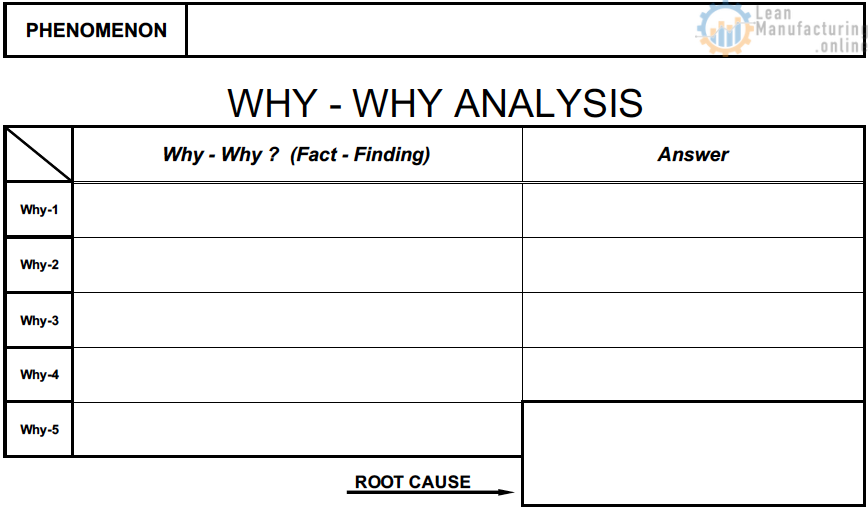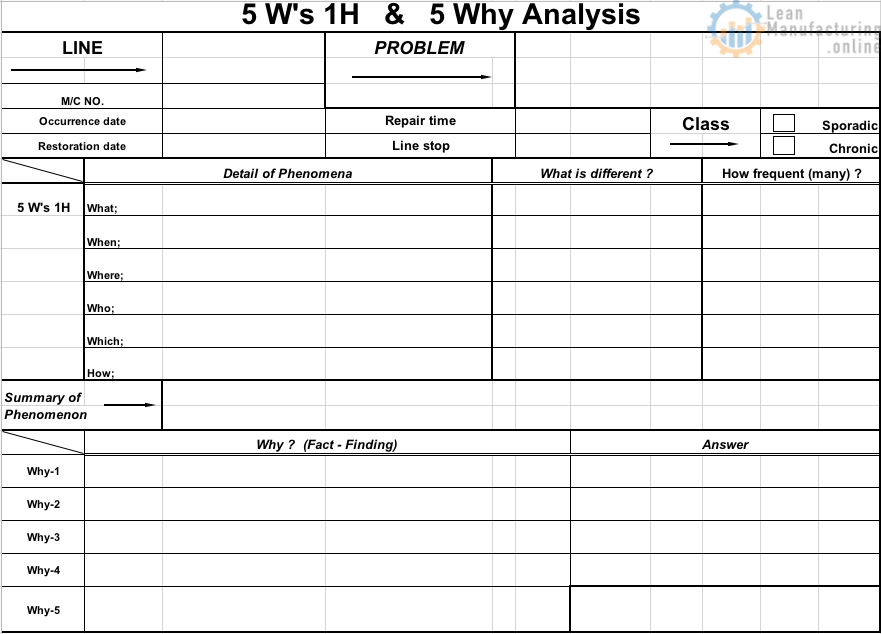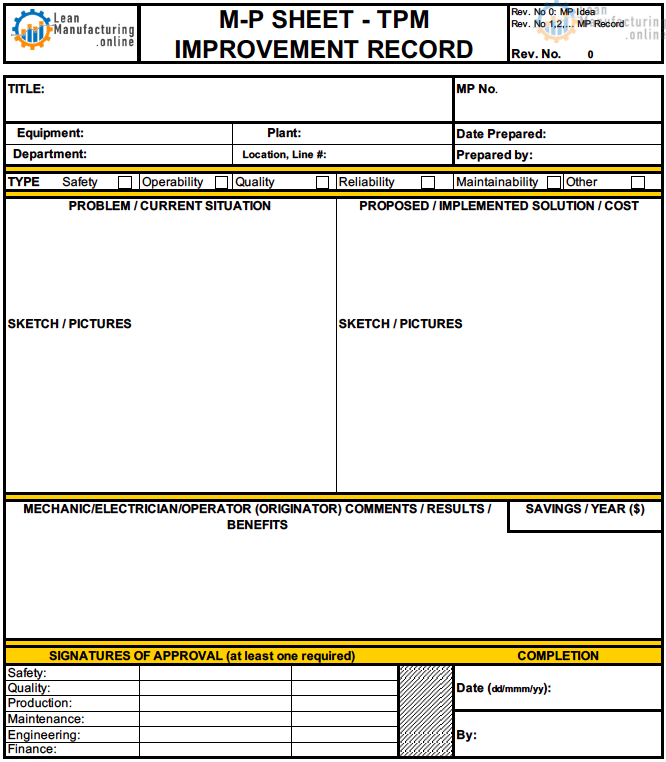In business and project management, effective tools for problem-solving and root-cause analysis are essential. This is where 5W 1H templates and Why-Why analysis come into play. These tools help individuals and teams to identify problems, understand the causes, and implement solutions in a structured and efficient manner.
What is why-why analysis?
The methodology is used to determine all possible causes for a specific phenomenon to determine the cause and eliminate it.
Why-Why Analysis
The Why-Why analysis is a technique used to identify a problem’s root cause. It involves repeatedly asking “why” questions until the root cause is uncovered. For example, if the problem is a machine breakdown, the first “why” question might be, “Why did the machine break down?” The answer might be, “Because a part broke.” The next “why” question would be, “Why did the part break?” This process is repeated until the root cause of the problem is discovered.
By identifying the root cause, individuals and teams can develop targeted and effective solutions that address the underlying issue rather than just addressing the symptoms of the problem.
What is the phenomenon?
Observe the facts with your own eyes; what exactly do you see? Observation without presumption.

.pdf template can be downloaded here
5W 1H Analysis
The 5W 1H template is a simple yet powerful tool that provides a structure for asking questions about a problem. The letters stand for the following questions:
- What: What is the problem or issue?
- Who: Who is involved in the problem or issue?
- Where: Where is the problem or issue taking place?
- When: When did the problem or issue start?
- Why: Why did the problem or issue occur?
- How: How can the problem or issue be solved?
By answering these questions, individuals and teams can clearly understand the problem at hand and develop potential solutions.

.pdf template can be downloaded here
5W 1H and Why-Why Analysis in one document

.pdf template can be downloaded here
FI BASIC TOOLS – 5W 1H AND 5 WHY ANALYSIS
PURPOSE: To find countermeasures against all root causes, thus preventing recurrence.
PROCESS: Clarify the situation using 5W 1H, keep asking Why until you find the root cause, and develop actions to prevent recurrence by attacking the root cause.
- Gathering details about the Loss (5W 1H)
- Identifying the link to Other Pillars
- Performing the Root Cause Analysis (5 Why Analysis)
- Generating the Action Plan
Test the logic of the final tree – Use of “because test”
Some questions to be asked:
- Which parts of this equipment are involved/critical?
- What is the function of each part?
- What dimensions are relevant and required?
- Which materials are involved /necessary?
- Which forces/counter-forces are relevant and critical?
- Is the process known/described in Critical Responsibilities/OPL/SOP/Training Checklists?
- Who are the resources for this equipment/process?
Validate each level of Why?
- Look, listen, Feel, Smell, ask- “Watch with a purpose.”
- Simulate
- Make the fix (Restore) and monitor
- Do the verification on the floor!
Combining 5W 1H Templates and Why-Why Analysis
These two tools can be used together for even greater results. The 5W 1H template can be used to identify the problem, and then the Why-Why analysis can be used to uncover the root cause. This combination provides a complete and thorough approach to problem-solving and root-cause analysis.
Conclusion
5W 1H templates and Why-Why analysis are simple yet effective tools that help individuals and teams solve problems and identify root causes. Individuals and teams can make informed decisions, implement effective solutions, and improve processes and outcomes using these tools. Whether you are managing a project or working on a team, these tools are worth considering for your problem-solving toolkit.















If you have possibility please send me the gemba walk guide line
Thanks for your interest in our products, you can download template here: https://learnfast.ca/product/gemba-waste-walk/